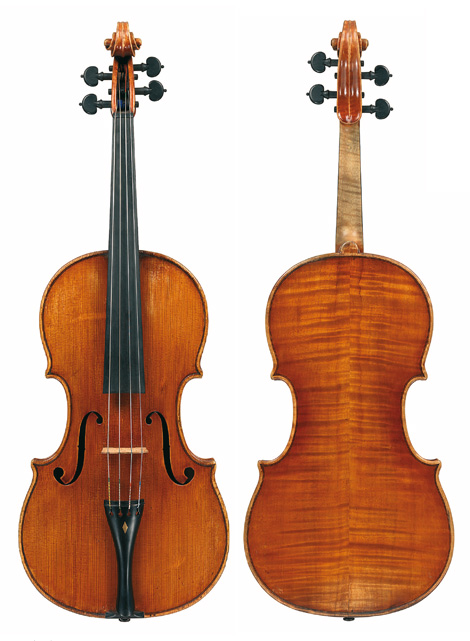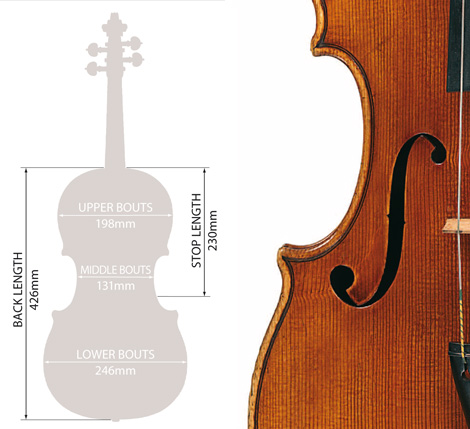Marino Capicchioni

This article is taken from The Strad April 2009.
Written by Sean Bishop, Photographs Richard Valencia
Maker Marino Capicchioni
Nationality Italian
Born Santa Mustiola, 1895
Died Rimini, 1977
Instrument Viola
Date 1950
Maker
Marino Capicchioni was born in 1895 in the region of the Republic of San Marino, and spent most of his working life in the seaside town of Rimini on the east coast of Italy. His father Bernardio was a carpenter and from an early age Marino learnt this trade. Music was important to the Capicchioni family, a fact that probably influenced Marino’s eventual career as a violin maker.
No known maker was associated with Capicchioni and his making style does not resemble that of any of his local contemporaries, so it is safe to assume that he must have been self-taught. From the mid-1940s Capicchioni’s son, Mario, assisted him in his workshop. After Capicchioni’s death in 1977, Mario continued to make violins based on his father’s model. During his lifetime, Capicchioni’s instruments belonged to many famous musicians including Yehudi Menuhin, Salvatore Accardo, and David and Igor Oistrakh. This viola was owned by a Swiss collector until 2008, when it was sold to the British violist John Thorne.


Material
Capicchioni always chose spruce and maple of a very high quality, and he regarded his wood as an important factor in the tone quality of his instruments. The top of this viola is quite unusual in that the grain is not always straight up and down – there is a small wave or kink near the eyes of the soundholes. On the back a mineral stain is quite evident, yet somehow in Capicchioni’s hands these minor flaws in the wood become key features of this viola.
Varnish
The alcohol-based varnish sits on a beautiful light red ground, and Capicchioni’s treatment of the top seems to accentuate the grain lines. This treatment, which he uses on all his instruments, gives them the slightly softened look that is difficult for new makers to achieve. However, one could not claim that the varnish has an antique appearance.
Form
This viola is based on a Stradivari model, and for a relatively large instrument it seems very in proportion to the eye. Capicchioni was also one of the few Italian makers to use the Tertis viola model; he even used this form for some violins and cellos. These are out of fashion among today’s musicians, but they are quite curious to come across, if rather difficult to play.
Scroll
The scroll is a work of art in style and proportion. The finely carved volutes are evidence of a maker of the highest order at work. The chamfers and eye of the scroll are slightly rounded over, like the edgework of the outline of the viola, to give a softened look.
Soundholes
The f-holes sit very straight up and down the viola with a rather large bottom eye. Very much in keeping with the Stradivari model, they are executed with clean perfection and lend the sense of grandeur that this wonderful viola demands.

